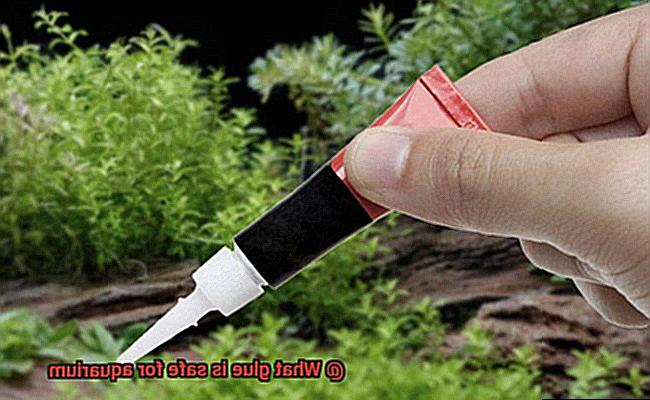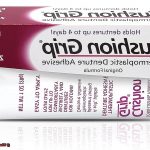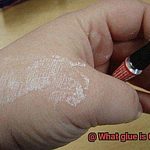Maintaining the beauty and stability of your aquarium can be a real sticky situation. With so many glues claiming to be safe for aquariums, how do you know which ones to trust? In this blog post, we’ll dive into the world of aquarium-safe glue, exploring different options and their potential risks.
When it comes to our underwater buddies, safety is key. The glue we choose should never release toxic substances into the water, putting our delicate ecosystem at risk. Luckily, there are several glues that have gained recognition for being aquarium-safe, providing reliable solutions for various applications.
One popular choice is epoxy, a two-part adhesive that combines resin and hardener. Epoxy is known for its strong bond and exceptional resistance to water, making it perfect for repairing and attaching decorations in your aquarium. However, beware of certain epoxy formulations that may contain harmful chemicals like BPA or phthalates. Always opt for epoxy specifically labeled as safe for aquarium use.
Another common option is cyanoacrylate, better known as super glue. True to its name, super glue creates an almost instant bond and is generally considered safe when used in moderation in your aquarium. However, be cautious with super glue variants that have additives like accelerators or colorings as they might harm aquatic life.
Silicone sealant is often used to reseal aquariums or secure background decorations. This adhesive forms a waterproof barrier and offers excellent flexibility. Make sure to choose silicone sealants specifically designed for aquariums as they are free from toxic substances like fungicides or mildewcides sometimes found in regular silicone products.
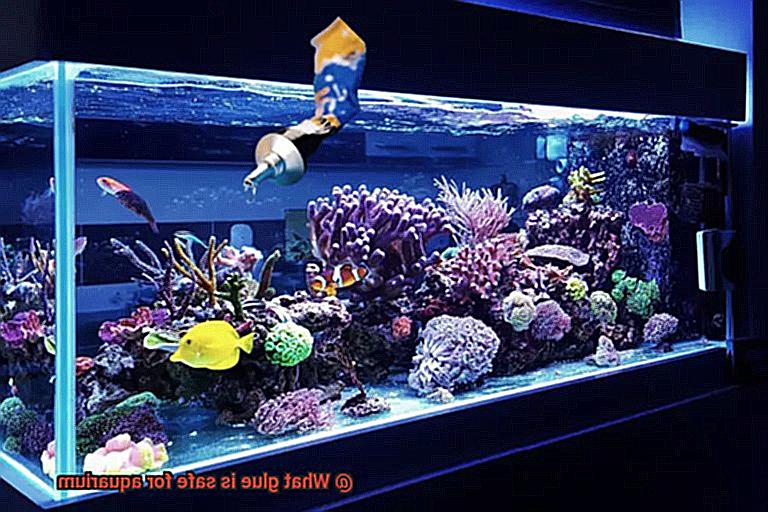
While there are plenty of options when it comes to safe glue for your aquarium, it’s crucial to do thorough research and select products that meet industry standards with a proven track record. Always read labels carefully and pay close attention to any warnings or instructions provided by the manufacturer.
In conclusion, finding the right glue for your aquarium can be a sticky challenge. Epoxy, cyanoacrylate, and silicone sealant are popular choices, but it’s essential to choose products labeled as safe for aquarium use to minimize any potential risks. Your aquatic friends deserve a safe and secure environment, so choose your aquarium glue wisely.
The Benefits of Using Silicone Adhesive in Aquariums
Contents
- 1 The Benefits of Using Silicone Adhesive in Aquariums
- 2 How to Choose the Right Silicone Adhesive for Your Aquarium
- 3 Using Cyanoacrylate Adhesive in Aquariums
- 4 Choosing the Right Cyanoacrylate Adhesive for Your Aquarium
- 5 Types of Glue Not Suitable for Use in Aquariums
- 6 Preparing Surfaces Before Applying Glue in an Aquarium
- 7 Safety Precautions When Working with Glue in an Aquarium
- 8 Conclusion
Creating a safe and leak-free environment is paramount for the health and well-being of aquarium inhabitants. Enter silicone adhesive, the unrivaled champion of gluing materials together in aquariums.
In this article, we will dive deep into the myriad benefits of using silicone adhesive in aquariums, discovering why it is the preferred choice for aquarists worldwide.
Waterproof Seal:
Imagine a tight embrace that never lets go – that’s the power of silicone adhesive. It forms an unyielding bond, warding off any water from seeping out of the aquarium. With this impenetrable seal in place, the structural integrity of the tank remains intact, eliminating the risk of water damage to surrounding areas.
Non-Toxic Nature:
In the underwater realm, toxicity is an unforgivable sin. Thankfully, silicone adhesive comes to the rescue with its inherently non-toxic properties. Unlike its glue counterparts, silicone doesn’t release any harmful chemicals or toxins into the water, ensuring a safe and healthy haven for your aquatic companions.
Flexibility:
The world is full of constant change, and so too are aquariums. That’s why silicone adhesive boasts remarkable flexibility. It fearlessly endures fluctuations in temperature and pressure without relinquishing its grip. This invaluable characteristic holds especially true for larger tanks where water pressure can be a formidable force.
Resistance to Mold and Mildew:
Mold and mildew – two unwelcome guests in any moist environment, but not in an aquarium protected by silicone adhesive. Its natural resistance to these intruders ensures your underwater paradise remains clean and pristine, safeguarding the health of its inhabitants.
Aesthetic Appeal:
An aquarium is not just a home for fish; it’s a work of art. And with silicone adhesive, you can create a masterpiece. Its transparent and invisible bond seamlessly connects materials, allowing the beauty of your aquarium to shine through. No unsightly glue lines here – just pure visual delight.
How to Choose the Right Silicone Adhesive for Your Aquarium
Setting up an aquarium requires careful consideration, and choosing the right silicone adhesive is no exception. It’s crucial to select an adhesive that is safe for aquatic life, provides a strong bond, and can withstand the harsh conditions inside an aquarium. In this guide, we will walk you through five essential factors to consider when choosing the perfect silicone adhesive for your aquarium.
Look for Aquarium-Safe Labels:
To ensure the safety of your aquatic inhabitants, it is vital to choose a silicone adhesive that is specifically labeled as “aquarium-safe” or “fish-friendly.” These adhesives have undergone rigorous testing to ensure they do not contain harmful chemicals or additives that can harm your fish or other aquatic creatures. By selecting these specially formulated adhesives, you can have peace of mind knowing that your aquatic environment will remain healthy and thriving.
Consider Strength and Durability:
When choosing a silicone adhesive, carefully evaluate its strength and durability. You want an adhesive that will create a reliable and long-lasting bond between the materials you are attaching, whether it’s sealing joints or securing heavy decorations. Look for adhesives with high tensile strength and those specifically formulated for underwater applications. This way, you can trust that your aquarium’s components will stay securely in place.
Resistance to Harsh Conditions:
Aquariums are challenging environments with water, temperature fluctuations, and exposure to chemicals like chlorine and salt. To ensure your silicone adhesive can withstand these conditions, choose one that is resistant to water, temperature changes, and common aquarium chemicals. Additionally, opt for adhesives that resist mold and mildew growth as these can quickly develop in the moist environment of an aquarium. By selecting a resilient adhesive, you can be confident in its ability to endure and maintain its bonding strength over time.
Read Product Labels:
To make an informed decision, carefully read product labels and descriptions. Look for detailed information about the adhesive’s properties and performance, such as temperature resistance and curing time. Some adhesives may require longer curing times, so it is essential to follow the manufacturer’s instructions to ensure optimal bonding strength. Pay attention to any specific instructions or precautions mentioned by the manufacturer so that you can use the adhesive correctly and safely.
Seek Recommendations:
Drawing from the experience of others can be invaluable when selecting a silicone adhesive for your aquarium. Seek recommendations from experienced aquarium hobbyists or professionals who have successfully used certain adhesives in their own setups. They can provide insights into which adhesives have worked well for them and share any tips or tricks they’ve learned along the way. By tapping into this collective knowledge, you can gain confidence in your choice of silicone adhesive.
Using Cyanoacrylate Adhesive in Aquariums
Look no further than cyanoacrylate adhesive, more commonly known as super glue. In this comprehensive guide, we will explore the ins and outs of using cyanoacrylate adhesive in your aquarium, providing you with the knowledge and tips to create a stunning and secure underwater world.
Clean and Prepare Surfaces:
To achieve a strong bond, it is crucial to thoroughly clean the surfaces that need to be bonded. Even the tiniest speck of debris or algae can hinder the bonding process. For optimal results, consider lightly roughening the surfaces with sandpaper, ensuring a textured surface for the adhesive to latch onto.
Apply Sparingly:
Remember, a little goes a long way. When it comes to applying cyanoacrylate adhesive, less is more. Applying it sparingly will not only provide a secure bond but also prevent excess glue from entering the aquarium and potentially causing harm to aquatic life. It is best to apply the adhesive outside of the aquarium and then carefully position the objects in their desired location.
Allow Sufficient Curing Time:
Once applied, cyanoacrylate adhesive cures rapidly. However, patience is key. It is essential to allow sufficient time for the adhesive to fully cure before introducing it into water. While curing times may vary depending on the brand, it is generally recommended to wait around 24 hours for a complete cure.
Not Suitable for Plastic Materials:
While cyanoacrylate adhesive works wonders on rocks, corals, and decorations, it should not be used on plastic materials. The adhesive can cause plastic to become brittle and break, compromising the integrity of your aquarium. Instead, consider alternative bonding methods for plastic objects within your tank.
Repositioning or Removing Bonded Objects:
Need to reposition or remove an object bonded with cyanoacrylate adhesive? Worry not. With a steady hand and the right tools, you can safely separate the bonded surfaces. A razor blade or scraper can be used, taking care to avoid damaging the aquarium or the objects themselves. Patience and precision are crucial to avoid any mishaps.
Choosing the Right Cyanoacrylate Adhesive for Your Aquarium
Transforming your aquarium into a captivating underwater paradise requires the right adhesive. Cyanoacrylate adhesive, commonly known as super glue, has emerged as a top choice among aquarium enthusiasts due to its rapid drying time and exceptional bonding properties. In this comprehensive guide, we will delve into the essential factors to consider when selecting the ideal cyanoacrylate adhesive for your aquarium.
Factor 1: Safety:
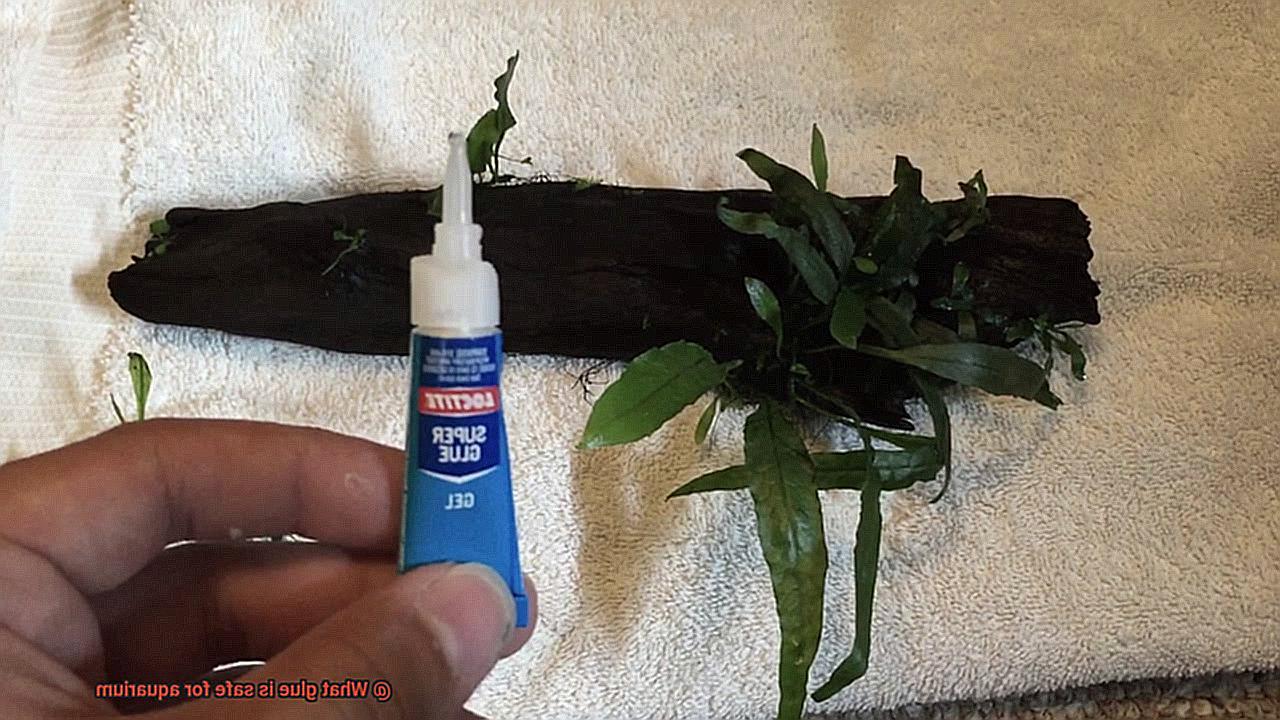
The paramount consideration when choosing a cyanoacrylate adhesive is its safety for aquarium use. Look for adhesives that are explicitly labeled as aquarium-safe, indicating that they are free from harmful substances or toxins that could endanger your aquatic life.
Factor 2: Curing Time:
The speed at which an adhesive cures is crucial. While some adhesives dry in mere seconds, others require several minutes to achieve a full bond. Opt for an adhesive that affords you sufficient time to position and secure your aquarium decorations before setting.
Factor 3: Underwater Use:
To ensure long-lasting strength and integrity, opt for an adhesive specifically formulated for underwater use. These adhesives have undergone rigorous testing and proven their ability to maintain their bond even when immersed in water for extended periods.
Factor 4: Flexibility:
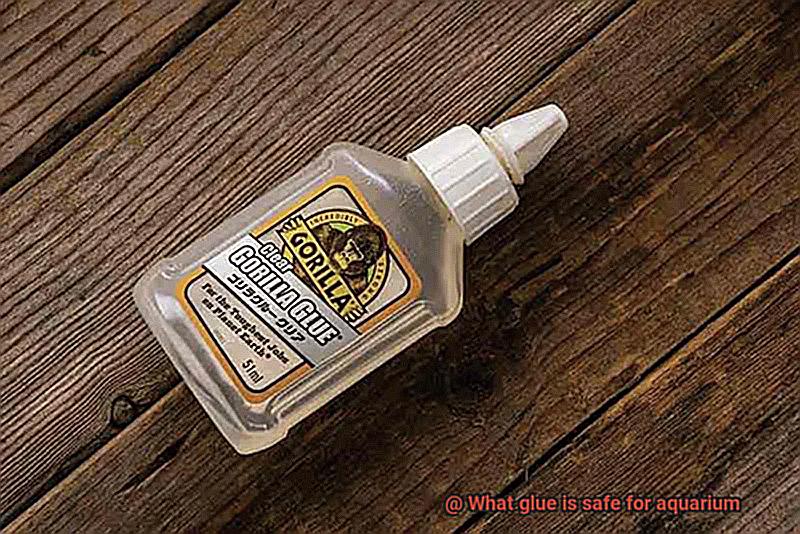
Aquarium decorations are subject to subtle movements caused by water currents and the activity of fish and other aquatic creatures. Select a flexible adhesive that can accommodate these movements without compromising the bond’s durability.
Factor 5: Moisture and Water Resistance:
An adhesive that boasts moisture and water resistance is essential for preserving a strong bond in a wet environment. Ensure that the adhesive you choose is impervious to the effects of water, guaranteeing the longevity of your aquarium decorations.
Factor 6: Transparency:
Consider the transparency of the adhesive as it dries. While some cyanoacrylate adhesives dry clear, others may leave behind a noticeable residue. For an aesthetically pleasing result, opt for an adhesive that dries transparently, seamlessly blending with the overall appearance of your aquarium.

Factor 7: Follow Manufacturer’s Instructions:
To maximize the adhesive’s effectiveness, it is crucial to carefully read and adhere to the manufacturer’s instructions. By following these guidelines, you will ensure proper application and achieve optimal bonding capabilities.
Factor 8: Test Compatibility:
Before applying the adhesive to larger surfaces or decorations, it is advisable to conduct a compatibility test on a small, inconspicuous area of your aquarium. This precautionary measure allows you to assess the adhesive’s compatibility and ensure that it does not have any adverse effects on your aquarium inhabitants.
Types of Glue Not Suitable for Use in Aquariums
Today, we embark on a journey to explore the perilous realm of glue and its unsuitability for our cherished aquatic ecosystems. Join us as we unveil the types of glues that should never find their way into our tanks, and uncover the reasons behind their incompatibility. Let us ensure our finned friends can swim freely and safely in their watery abodes.
Epoxy Glue – Toxicity Lurking Beneath
Oh, epoxy glue, your reputation for formidable bonding powers is legendary. Yet beneath your seemingly innocent exterior, lies a treacherous secret. The curing process of epoxy glue releases toxic substances, such as bisphenol A (BPA) and phthalates, which pose a great threat to our beloved aquatic companions. These chemicals can infiltrate the water and wreak havoc on our fishy friends, jeopardizing the delicate balance of life within our aquariums.
Super Glue – A Sticky Situation
Super glue, oh how alluring your quick-fix abilities may be. However, unbeknownst to many, this adhesive harbors hidden dangers when exposed to water. Super glue releases toxic fumes that can permeate the aquatic environment, causing harm to our underwater allies. Moreover, super glue is not waterproof and can deteriorate over time when submerged, compromising its adhesive properties.
Silicone Sealant – Choose Wisely
Ah, silicone sealant, the go-to solution for aquarium enthusiasts seeking watertight security. Yet not all silicone sealants are created equal. It is vital to select a product specifically labeled as aquarium-safe or fish-safe. Regular sealants may contain additives or fungicides that spell disaster for our finned friends. These additives can leach into the water, endangering the health and well-being of our aquatic companions.
Hot Glue – Too Hot to Handle
Hot glue guns, a beloved tool among craft enthusiasts, have no place in our aquariums. Though tempting for various projects, hot glue can release harmful chemicals when submerged. These chemicals can prove toxic to our underwater inhabitants, undermining the serenity of their watery haven. Furthermore, hot glue is not designed to withstand constant exposure to water and lacks the ability to provide a truly waterproof seal.
Solvent-Based Glues – Dissolving Our Dreams
Rubber cement or contact cement may initially appear as viable options, but these solvent-based glues are far from suitable for aquarium use. Their solvents can dissolve or damage aquarium materials such as acrylic or glass, jeopardizing the structural integrity of the tank. Moreover, the solvents used in these glues can be detrimental to the health and vitality of our aquatic life, casting a shadow over our underwater dreams.
Preparing Surfaces Before Applying Glue in an Aquarium
Are you ready to take the plunge into the underwater world of glue in aquariums? Get your flippers on, because we’re about to dive deep into the critical steps of properly preparing surfaces before applying glue in an aquarium.
First and foremost, cleanliness is key. To create a perfect bonding surface, start by thoroughly cleaning the surfaces using a non-toxic aquarium-safe cleaner. Wave goodbye to dirt, debris, and sneaky algae that may be lurking. This ensures that you have a sparkling clean canvas for the glue to adhere to.
Once your surfaces are squeaky clean, it’s time to dry them off. Remember, some glues don’t bond well with wet surfaces, so make sure they are bone dry. This will give your glue the best chance of creating a strong and lasting bond.
In some cases, a little roughening is needed to improve adhesion. Gently sand the surfaces with fine grit sandpaper, but be cautious not to overdo it. We don’t want any unintentional damage to your beloved aquarium.
Now that your surfaces are clean and dry, it’s time to tackle any grease or oils that might interfere with the adhesive properties of the glue. Use an aquarium-safe degreaser or rubbing alcohol to wipe away any unwanted substances and ensure a pristine surface for bonding.
Keep in mind that different materials may require different surface preparation techniques. Glass surfaces usually only require cleaning and drying, while plastic or acrylic surfaces may benefit from a bit of sanding to enhance adhesion. Tailor your approach accordingly.
Last but not least, before you commit to the glue, it’s highly recommended to perform a compatibility test. Apply a small amount of glue on a discreet area of the surface and observe its effectiveness and any potential adverse reactions. Better safe than sorry.
By following these steps and taking the necessary precautions, you can confidently apply glue in your aquarium without any sticky situations. So go ahead and tackle those underwater DIY projects with ease.
Safety Precautions When Working with Glue in an Aquarium
Working with glue in an aquarium requires careful attention to safety precautions to protect both the aquatic life and yourself. By following these key measures, you can ensure a successful and safe experience. This article will discuss important safety measures when using glue in an aquarium.
Choose the right glue:
Select an aquarium-safe glue that is specifically formulated for underwater use. Avoid regular household glues that may contain harmful chemicals that can harm aquatic life.
Read the product label:
Always read and follow the instructions provided by the glue manufacturer. The label contains important information about safety, application methods, curing time, and any precautions you need to take while using the glue.
Ensure proper ventilation:
Work in a well-ventilated area or consider performing the gluing process outdoors or in a separate workspace away from the aquarium. Some adhesives produce fumes during curing that can be harmful if inhaled excessively.
Wear protective gear:
Protect yourself by wearing appropriate safety gear such as gloves, goggles, and a mask. Gloves prevent direct contact with the adhesive, goggles shield your eyes from potential splashes, and a mask filters out harmful fumes or particles.
Clean the surfaces:
Before applying glue, clean the surfaces to be bonded using an aquarium-safe cleaner or rinsing thoroughly with water. Remove any dirt, algae, or residual substances that may interfere with bonding.
Secure loose objects:
Ensure that any objects being glued inside the aquarium are securely fastened before adding water back into the tank. This prevents accidental movement or displacement that could harm your fish or other aquatic creatures.
Allow sufficient curing time:
Follow the recommended curing time provided by the glue manufacturer. Fully cured adhesive is vital before reintroducing aquatic life or rearranging tank decor. Premature exposure to water can weaken the bond and release toxic substances into the aquarium.
Monitor water quality:
After gluing, closely monitor the water quality for any changes. Keep an eye on parameters such as pH, ammonia, nitrate, and nitrite levels to ensure that the glue is not adversely affecting water chemistry. Take immediate action if you notice any abnormalities or signs of distress in your aquatic inhabitants.
Conclusion:
Working with glue in an aquarium demands attention to detail and adherence to safety precautions to protect both the aquatic life and yourself. By choosing the right glue, following instructions, maintaining proper ventilation, wearing protective gear, cleaning surfaces, securing objects, allowing sufficient curing time, and monitoring water quality, you can ensure a safe and successful bonding experience in your underwater world.
CKAC5L8G4oI” >
Conclusion
When it comes to choosing the right glue for your aquarium, safety is paramount. You want a glue that not only bonds effectively but also won’t harm your aquatic friends. After careful research and consideration, it is clear that silicone-based adhesives are the best choice for aquarium use.
Silicone adhesives have several qualities that make them safe and suitable for aquariums. Firstly, they are non-toxic and do not release any harmful chemicals into the water. This means that even if your fish or other aquatic creatures come into contact with the adhesive, they will not be harmed.
Furthermore, silicone adhesives are waterproof and resistant to moisture. This is crucial for maintaining a leak-free environment in your aquarium. Whether you need to repair a crack or attach decorations, silicone adhesive will provide a strong and durable bond that can withstand the constant exposure to water.
Another advantage of silicone-based adhesives is their flexibility. They can expand and contract with temperature changes without losing their grip. This is particularly important in aquariums where water temperature fluctuations can occur.
It’s worth noting that not all silicone adhesives are created equal. Look for ones specifically labeled as “aquarium-safe” or “fish-safe.” These products have been tested and approved for use in aquatic environments, giving you peace of mind knowing that you’re using a reliable and trusted product.
In conclusion, when it comes to gluing things in your aquarium, choose a silicone-based adhesive that is specifically designed for aquatic use. It’s the safest option that will ensure the well-being of your underwater companions while providing a strong and long-lasting bond.

